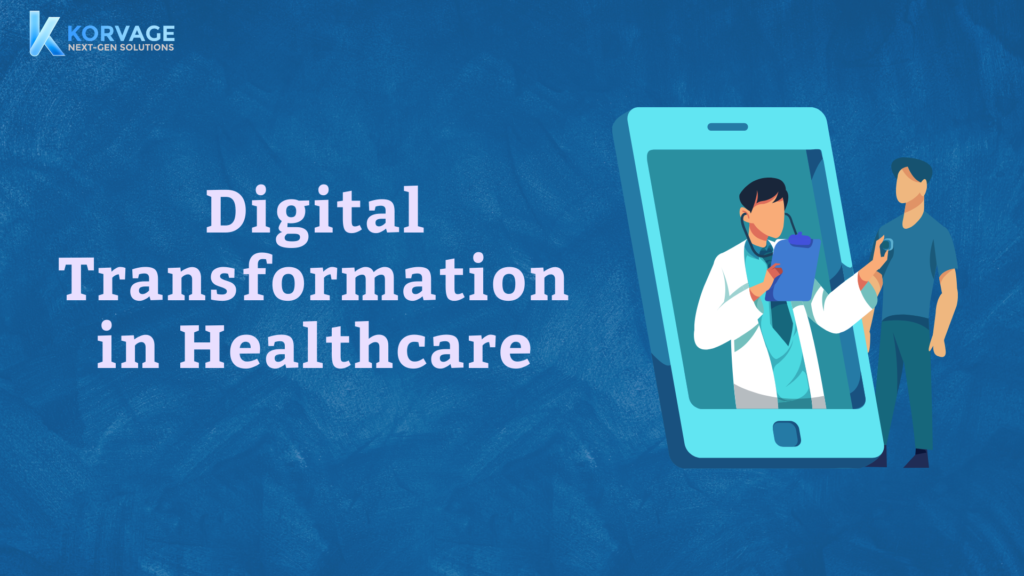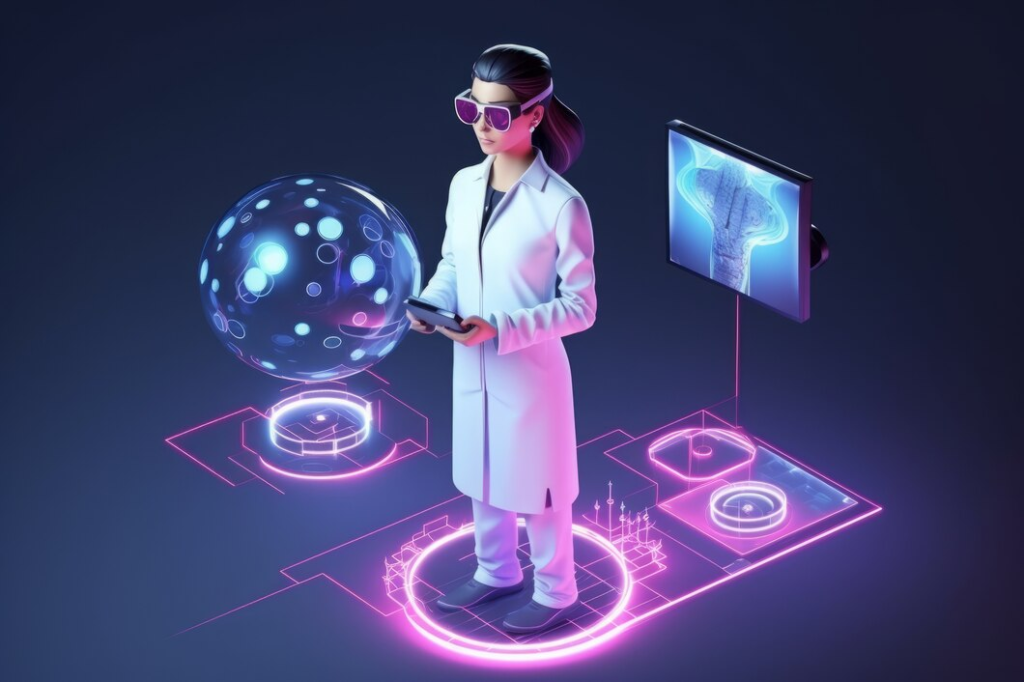Digital Transformation Examples in Healthcare

Introduction
Digital transformation in healthcare refers to the combination of digital technologies to improve patient care, and processes, and improve overall efficiency within the industry. It covers various technological advancements aimed at reforming healthcare delivery and management.
Visit Our Page.
The Need for Digital Transformation in Healthcare
Challenges Facing the Healthcare Industry
Rising Costs and Limited Resources
The healthcare industry has escalating costs and resource limitations, posing significant challenges to delivering quality care. Traditional models struggle to sustainably meet the growing demand for services amidst budgetary constraints.
Fragmented Data Systems
A common issue in healthcare is the splitting of data systems, leading to disjointed care delivery and inefficiencies.
Increasing Patient Expectations
With rising expectations fueled by digital advancements in other industries, healthcare providers face pressure to innovate and meet evolving consumer needs.
Why Digital Transformation is Crucial
Digital transformation emerges as a critical imperative for the healthcare industry to address its pressing challenges effectively.

Digital Transformation Trends in Healthcare
Improving Access to Care Through Telehealth Services
Telemedicine emerges as a transformative solution to bridge geographical barriers and improve access to healthcare services that enable patients to receive timely care, particularly in underserved or remote areas.
Enhancing Patient Engagement with Remote Monitoring Technologies
Remote patient monitoring technologies empower individuals to take an active role in managing their health. Wearable devices and mobile apps facilitate continuous monitoring of vital signs, medication adherence, and lifestyle behaviors in healthcare management and patient engagement.
Leveraging Big Data and Analytics for Informed Decision Making
Harnessing Data Insights to Improve Treatment Outcomes
The proliferation of healthcare data presents immense opportunities for leveraging analytics to enhance treatment outcomes.
Predictive Analytics for Disease Prevention and Population Health Management
Predictive analytics hold promise in proactively identifying at-risk populations, preventing disease progression, and optimizing resource allocation.

Integrating Artificial Intelligence and Machine Learning
Enhancing Diagnostic Accuracy and Speed
Artificial intelligence (AI) and machine learning (ML) revolutionize healthcare diagnostics by augmenting clinician capabilities and improving accuracy and efficiency.
Advanced algorithms analyze medical imaging, genetic data, and clinical notes to expedite diagnosis, detect abnormalities, and inform treatment planning.
Streamlining Administrative Processes with AI-Powered Solutions
AI-driven solutions streamline administrative tasks, such as scheduling, billing, and documentation, reducing administrative burden and improving operational efficiency.
Natural language processing (NLP) algorithms automate routine workflows, freeing up time for healthcare professionals to focus on patient care.

Improving Healthcare Outcomes with Data-Driven Approaches
Early Detection and Intervention Through Predictive Analytics
Data-driven approaches, such as predictive analytics, enable early detection of disease, identification of high-risk patients, and targeted interventions to prevent adverse events.
Treatment Plans Based on Patient Data and Trends
By harnessing patient data and trends, healthcare providers can tailor treatment plans to individual needs, preferences, and circumstances
Challenges and Considerations in Digital Transformation
Safeguarding Patient Data in an Increasingly Digital Environment
As healthcare becomes increasingly digitized, protecting patient data from cyber threats, breaches, and unauthorized access becomes paramount
Compliance with Regulations such as HIPAA and GDPR
Healthcare organizations must adhere to stringent data privacy regulations, such as the Health Insurance Portability and Accountability Act (HIPAA) and the General Data Protection Regulation (GDPR), to protect patient confidentiality and avoid regulatory penalties.
Addressing Technological Barriers and Infrastructure Requirements
Ensuring Interoperability Among Different Systems and Devices
Interoperability challenges, such as incompatible software systems and data formats, hinder seamless information exchange and care coordination across healthcare settings.
Standardized protocols, data exchange standards, and interoperability frameworks are essential to overcoming technical barriers and enabling seamless communication among disparate systems and devices.
Overcoming Resistance to Change Among Healthcare Professionals
The successful adoption of digital transformation initiatives hinges on overcoming resistance to change among healthcare professionals. Effective change management strategies, stakeholder engagement, and training programs are essential to fostering a culture of innovation, promoting user adoption, and maximizing the benefits of digital solutions in healthcare delivery.
Future Trends and Opportunities in Healthcare Digital Transformation
Integration of Virtual Reality and Augmented Reality in Healthcare Delivery
Advancements in virtual reality (VR) and augmented reality (AR) technologies hold promise for enhancing medical training, patient education, and surgical planning.
Expansion of AI Applications in Clinical Decision Support and Drug Discovery
Artificial intelligence (AI) applications continue to expand across various facets of healthcare, from clinical decision support to drug discovery and development.
Collaborative Approaches to Digital Transformation
Partnerships Between Healthcare Organizations and Tech Companies
Collaborative partnerships between healthcare organizations and technology companies drive innovation, accelerate digital transformation, and unlock new opportunities for improving patient care.
Engaging Patients in Co-Designing Digital Solutions
Engaging patients as partners in the design and development of digital solutions ensures that technology meets their needs, preferences, and expectations.
Conclusion
Digital transformation represents a paradigm shift in healthcare delivery, offering unprecedented opportunities to enhance patient care, improve outcomes, and drive innovation. By embracing emerging technologies, fostering collaboration, and prioritizing patient-centricity, healthcare organizations can navigate the evolving landscape, overcome challenges, and pave the way for a healthier future.



